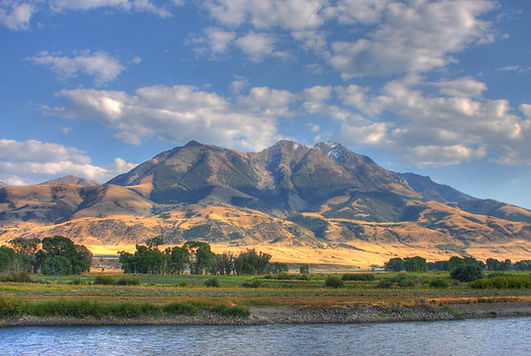Originating on Yount Peak in the Absaroka Range and entering Montana in the town of Gardiner, the Yellowstone River drains 70,000 square miles of land, before it joins the Missouri River northeast of Sidney, Montana. In addition to an abundance of fish and wildlife, the Yellowstone River supports a wide variety of tourism, agricultural, industrial, and recreational uses. Native Americans have lived in the area for at least 13,000 years and have used various names such as the Elk River to identify it (Poônôkaiit”taa in Blackfeet and Ichílíkasháashe in Crow). Lewis and Clark learned the name Meé,-ah'-zah—literally, "stone river" from the Hidatsas, and adopted the French roche jaune, literally "yellow stones" to describe it in their famous journals.
Values
To understand and conserve the Upper Yellowstone watershed, including its agriculture, open space, rural character, wildlife, fisheries, natural resources, and recreational use while protecting private property rights.
Focus and Membership
The UYWG focuses its efforts on the watershed of the Upper Yellowstone River from Yellowstone National Park and the town of Gardiner downstream to Carter’s Bridge north of Livingston, Montana (Map).
We welcome all interested citizens who support the goals of the UYWG and live or work within the watershed boundaries. Our core membership are the working lands operations, whether owners, operators, leasers, renters, or tenants. Traditionally, this has been agricultural producers, but more and more, local tourism and recreation businesses own and operate large acreages of land. In some cases, they are one and the same - agricultural businesses with recreation and guiding operations as well.
Goals
The Upper Yellowstone Watershed Group (UYWG) works through consensus-based collaboration among the stakeholders of the Upper Yellowstone River watershed to enhance watershed health and the regional economy. Its goals are to:
-
Preserve production agriculture and the open space it provides by promoting a stewardship approach to watershed management.
-
Protect and respect private property rights.
-
Provide dependable and accessible information through collection and dissemination of scientifically sound monitoring and assessment data.
-
Maintain and preserve the overall health of the watershed by developing best practices, seeking innovative solutions, and working to improve drought response and preparedness.
-
Lead community education and outreach efforts on watershed-related issues.
-
Provide a collective ‘voice for the watershed’ through the exchange of ideas and response to issues.
“Conservation will ultimately boil down to rewarding the private landowner who conserves the public interest.”
Aldo Leopold did not define his land ethic with a litany of rights and wrongs in A Sand County Almanac. Instead, he presented it as a set of values that naturally grew out of a lifetime of experiences in the outdoors. Leopold wrote that “we can only be ethical in relation to something we can see, understand, feel, love, or otherwise have faith in.” A land ethic, thereore, is ultimately, locally driven.



